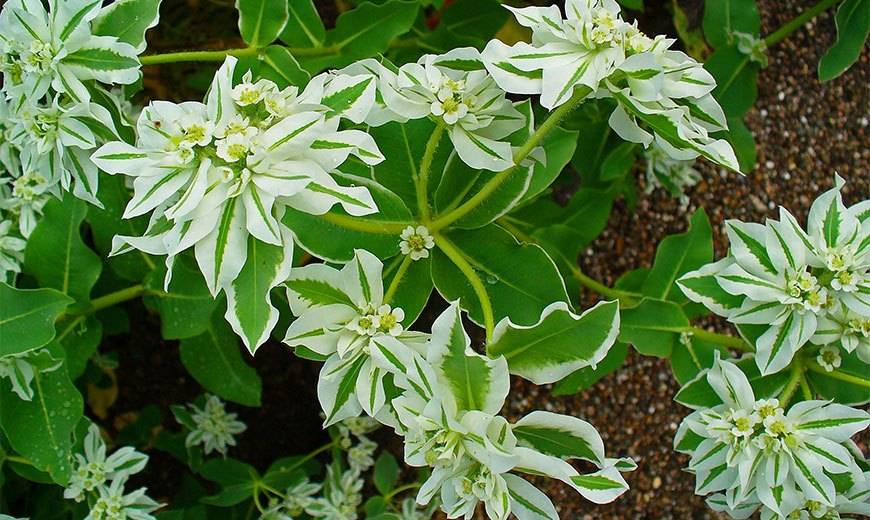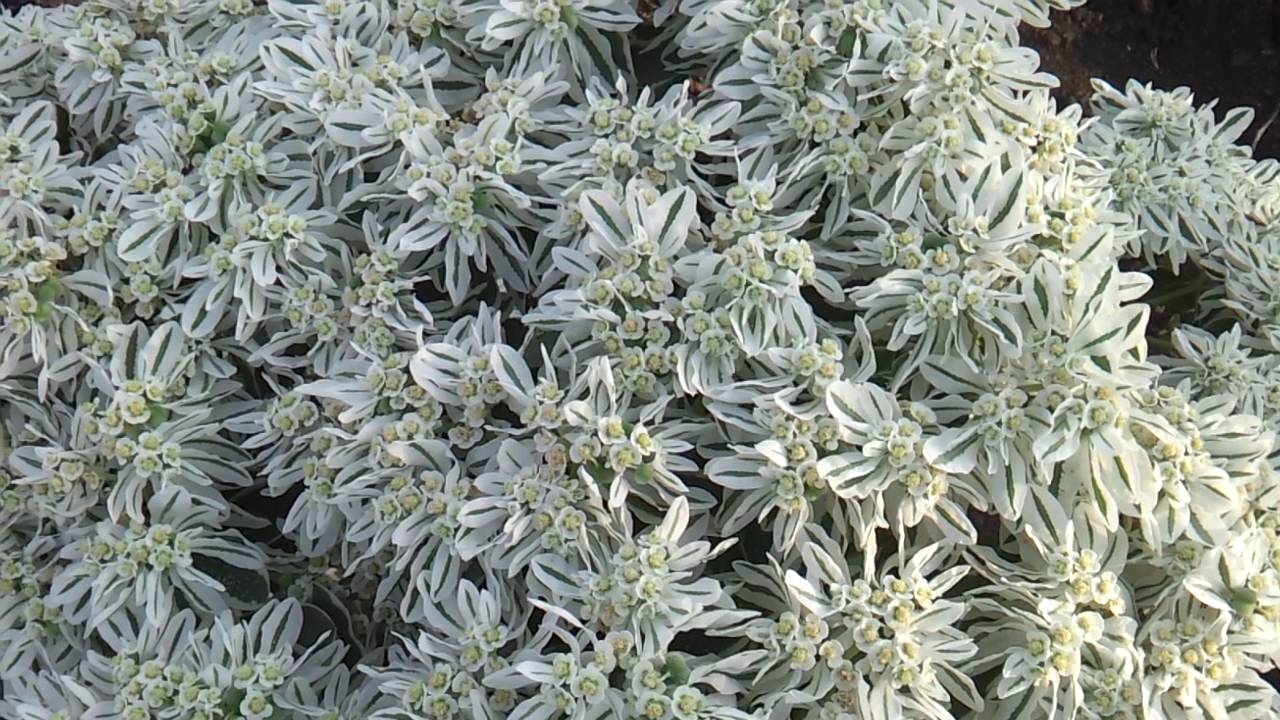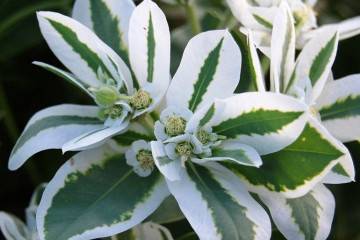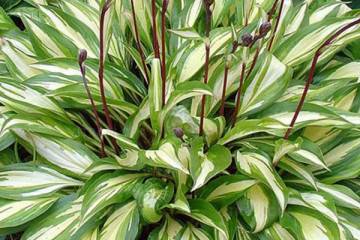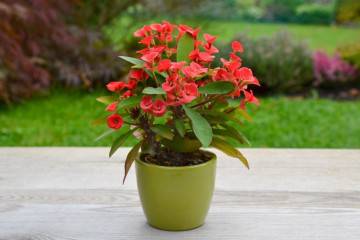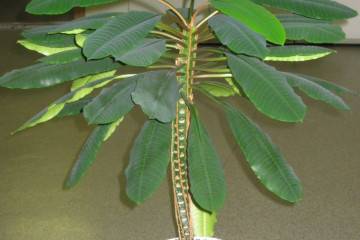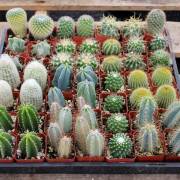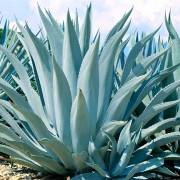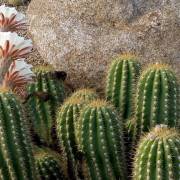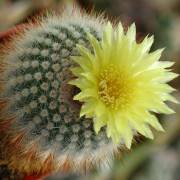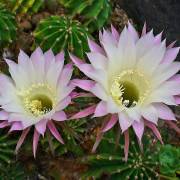Euphorbia flower - types and popular varieties
Content:
Euphorbia belongs to ornamental crops. The amazing appearance of the plant and its unpretentiousness are undoubted advantages. Often, flower growers call euphorbia euphorbia. Due to the presence of useful properties, ornamental culture is often used in folk medicine.
However, such treatment is not recommended without the advice of a specialist, since milky juice in the foliage and stalks of milkweed, which contains poison and can harm human health.
Description of the flower
What does spurge look like? Euphorbia is a plant that belongs to the category of annual or perennial herbaceous crops that are members of the Euphorbia family. The fragile and juicy stems and foliage of the succulent are capable of accumulating moisture. At the slightest damage to the leaf plate, milky sap is released, which effectively protects the culture from the invasion of pests. The juice contains:
- amino acids;
- sterol;
- rubber;
- essential oil;
- resin and sugar.
Euphorbia can grow as a tree or shrub. The appearance of the culture resembles a cactus. Succulents are widely distributed in areas with tropical and subtropical climates. The foliage of representatives of the Euphorbia family can be of various shapes:
- narrow;
- oval;
- ovoid;
- toothed;
- all-edge.
The leaf plates of the euphorbia cactus are located oppositely. Each inflorescence consists of a small number of male-type stamens and a single pistillate flower. Each group of flowers is surrounded by a pair of bracts painted in different colors. Flowering begins in early or mid-summer.
Common species and varieties
There are many varieties of euphorbia. Below are the most common types of milkweed.
- Euphorbia multiflorous is an unpretentious shrub, the height of which reaches 55-70 cm. The variety, like the variegated species, is frost-resistant and elegant in appearance. The inflorescences located at the ends of the shoots are painted in a yellow-golden palette. The shade of the inflorescences changes throughout the season. The yellow-golden palette gradually acquires a light green tone. The flowering period lasts from late spring to July. However, despite the short flowering, the bushes retain their decorative qualities until mid-autumn, delighting the owner of the site with lemon-colored leaf plates.
- Euphorbia is the most beautiful, which is often called poinsettia. The flowering of the variety begins in December 14-21. Bright green foliage is located under the inflorescences, which can be painted in bright red, pink, white. At the same time, the inflorescences look inconspicuous. The beautiful milkweed variety prefers well-lit areas. In the hot season, it is necessary to shade the plant from direct sunlight to prevent sunburn. The temperature in the room in which the poinsettia is kept in the winter period should be in the range of 8-9 ° C. By providing proper care for the plant, you can achieve abundant flowering.
- Euphorbia almond is a shrub, the height of which reaches 55-60 cm.The foliage of the culture is painted in bright light green tones. You can admire the gorgeous flowering from mid-spring to the last days of June. The variety prefers a warm climate. It is important to protect the plant from strong winds and drafts. The almond euphorbia euphorbia is ideal for indoor cultivation.
- Euphorbia fringed belongs to the category of annual herbaceous plants, the height of which does not exceed 80 cm. The luxurious flowering became the reason for the appearance of the second name of the milkweed. The people often call him a bride. Snowy white leafy plants decorate the grass effectively. The variety is distinguished by good branching. If you plant several bushes of a bordered variety of milkweed in a flower garden, you get the impression that the flower bed is covered with snow. Each leaf plate is endowed with a white border. Small flowers are located at the top of the shoots. During the season, the color of the foliage changes. The sheets of this type of euphorbia can be of various shapes. It is important to protect flowers from drafts and strong gusty winds. Milkweed bloom Mountain snow, as this variety is also called, lasts from early summer to October.
- Euphorbia myrtle (aka fat spurge) is a decorative variety of milkweed, the shoots of which creep along the surface of the soil. The leaf plates of myrtle euphorbia are naturally endowed with a blue tint. The foliage densely covers the stems. The height of a perennial ornamental culture, like a triangular variety, reaches 20-25 cm. The outlines of the leaves resemble clear geometric shapes. Throughout the growing season, the flowers of the milkweed myrtle leaf change their color. Bright buds have a pleasant aroma. Experienced growers recommend planting bushes in bright areas with limestone soil. The variety, like the euphorbia synadenium, can be propagated by dividing the bushes and using the seed method.
- Cypress spurge is a perennial decorative culture that is widespread in Western Europe. The foliage of the plant is acicular. By pruning the spurge in time, you can make it look like a fluffy ball. In the first weeks of June on the bushes, you can see small flowers, painted in yellow or pale pink shades. By caring for the crop, you can achieve re-flowering in the autumn months. Foliage during the growing season changes its shade to a bluish color. The variety belongs to drought-resistant and frost-resistant plants, which are often used by landscape designers when creating an alpine slide, rockery or mixborder. Cypress spurge looks spectacular in combination with irises. The foliage and stems of the plant contain milky juice, which contains poison.
- Euphorbia Akalifa is often called foxtail. The plant belongs to the category of evergreen strongly branching shrubs, the height of which does not exceed 60 cm. The ovoid leaf plates are naturally endowed with small denticles. Flowers, collected in spike-shaped inflorescences, are painted in bright red tones. Flowering begins in March and lasts until October. By properly caring for an ornamental crop, you can achieve abundant flowering. During this period, it is important to abundantly moisturize the soil and apply top dressing. The Akalifa milkweed bushes are planted in well-lit areas. Propagation of a culture, like euphorbia, can be done by cuttings.
- Euphorbia bupleurumolistny is a rather rare type of euphorbia. Weakly branching shrub reaches a height of 18-22 cm. Spiral tubercles are located along the entire length of the stems and branches. Flowers on high peduncles in the upper part of the bush. In winter, the beneficial plant does not need watering. Euphorbia of this species can only be propagated by seed.
- Canary spurge - trees that grow up to 11-12 m in height. The variety is no less popular than ribbed spurge, yellow spurge, toothed spurge. The diameter of the branches is 5 cm.In the region of the ribs, the plant has small tubercles and double spines, painted in brown tones. Often, Canarian spurge is grown in private houses and apartments. The variety can be propagated by cuttings and seeds. Experts recommend watering the Euphorbia palm abundantly on hot summer days.
Any spurge, the types of which are listed above, are distinguished by gorgeous flowering.
Features of plant care
By properly caring for an ornamental crop at home, you can achieve abundant flowering. The features of care are presented below.
Planting and transplanting
In addition to the initial planting of a young seedling, the plant needs an annual transplant. It is advisable to plant the crop in pots in the spring at the beginning of the growing season. For planting perennial milkweed in room conditions, it is necessary to use a soil mixture, which includes:
- peat;
- sand;
- sod soil;
- peat land;
- chips of brick;
- leafy land.
A crumb of brick can be replaced with vermiculite. When transplanting plants that are more than four years old, it is recommended to add quilted compost to the soil. The land should be well drained and allow water to pass through when irrigated. On the surface of the bottom of the container, a drainage layer is mandatory.
Pruning
As soon as the flowering of the plant is completed, you can start pruning the shoots that are stretched out. When pruning, it is recommended to remove the upper parts of the shoots, which will form the crown of the shrub. Dry stems are removed and the renewal shoots are shortened. After such pruning, the plant will begin to bloom in a season, but there will be much more buds.
Lighting
Euphorbia needs good lighting, both in winter and in summer. On too hot days, it is better to shade the bushes with a special garden net to prevent burns. Experts recommend carrying out supplementary lighting with a phytolamp at home in winter.
Fertilizer
When active flowering begins, experts recommend making special fertilizing, which are intended for cacti and succulents. Fertilizer at this time is applied every 10-14 days. If desired, you can use a top dressing intended for flowering crops. If a universal fertilizer is used for indoor flowers, it is necessary to apply a dose 2 times less than the manufacturer recommends. You can also use an orchid fertilizer.
Air humidity
Ornamental culture is able to sustainably endure a dry period. Spraying should only be done on particularly dry days or for hygiene reasons.
Reproduction
The euphorbia plant can be propagated by cuttings. Sprinkle each cut with crushed charcoal. In addition, flower growers use the seed method, sowing it in peat soil with a small amount of river sand. It is necessary to plant round-shaped seeds in spacious containers. They are laid in a container at a distance of 5 cm from each other. The planting material is sprinkled with a small amount of sand and moistened with a spray bottle. The container is covered with glass or cellophane.Regular ventilation will help avoid excessive moisture.
Euphorbia is one of the most common plants around the world. Experts identify more than 2000 varieties of decorative culture. A large number of varieties are used by landscape designers when ennobling a personal plot. In addition to decorative qualities, the culture contains useful substances that help to cope with diseases. However, it should be borne in mind that any of the varieties contain toxic substances. When self-medicating, it must be borne in mind that poison can provoke poisoning and other health problems. Treatment can only be carried out under the supervision of the attending physician.
Video
